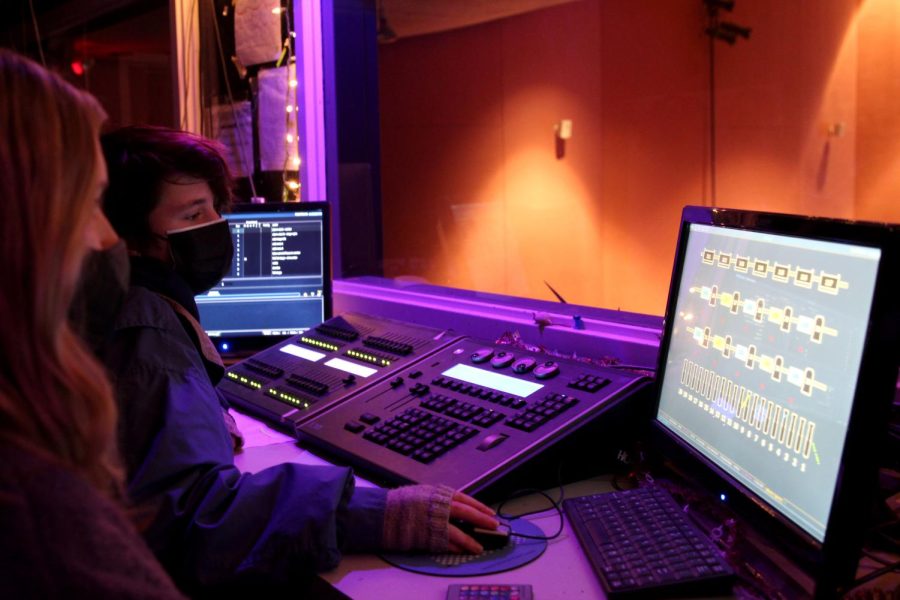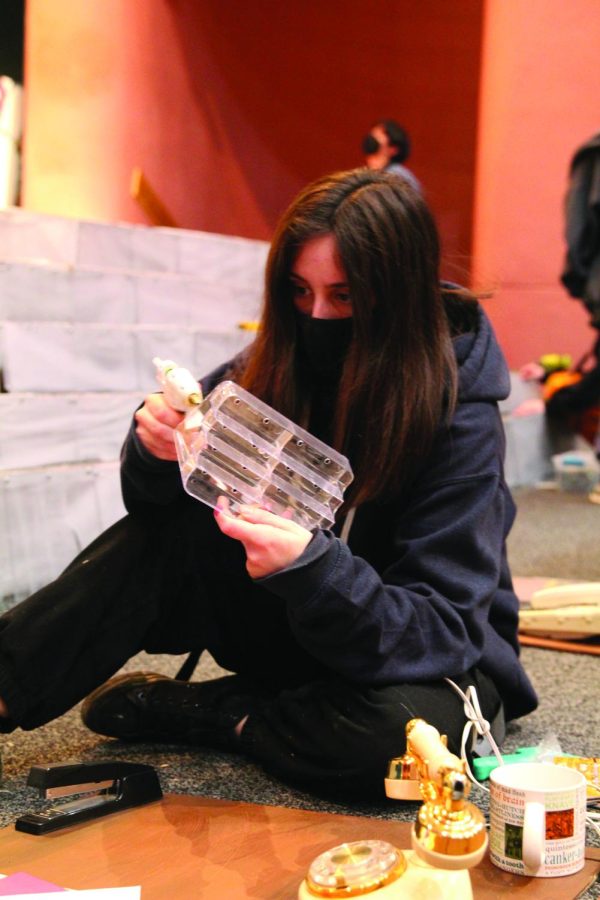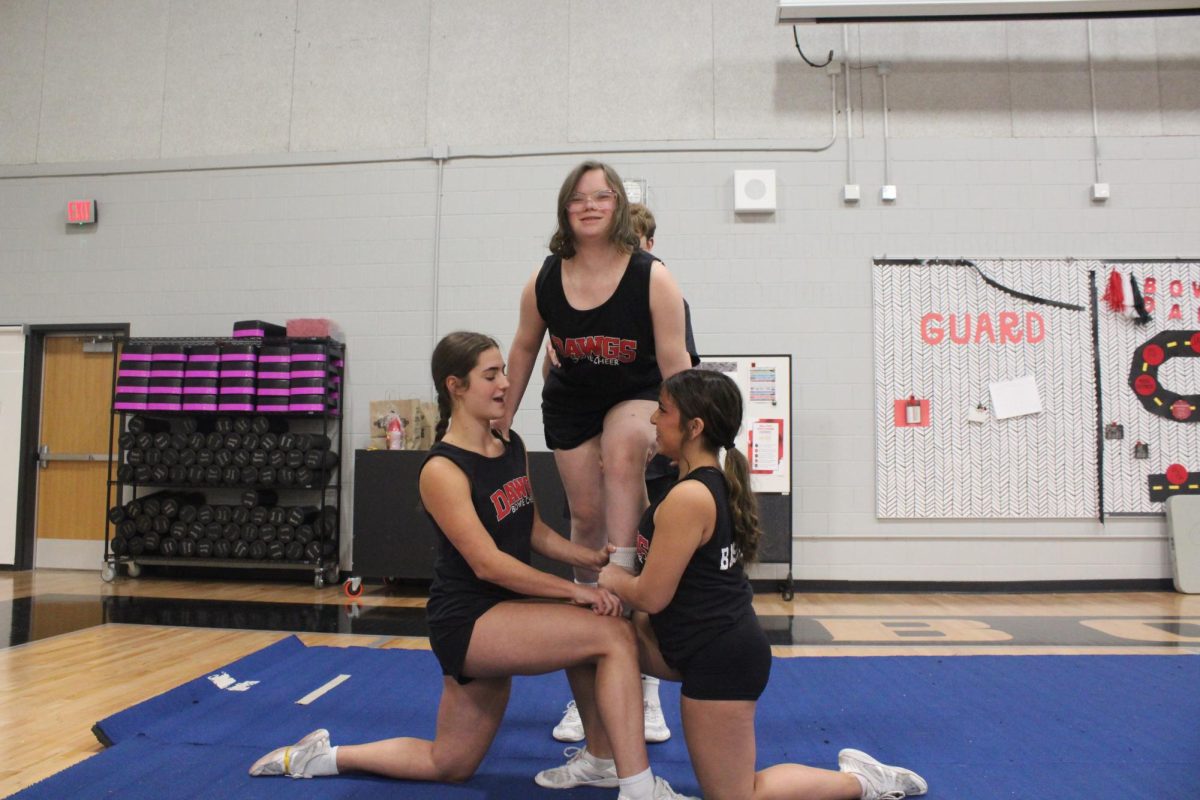Go behind the curtains
Technicians reveal the hidden roles of the musical’s production
LIGHTS, CAMERA, ACTION: During a dress rehearsal run, senior Colette Waid reviews the lighting design before the actors begin performing on stage. Waid was cast as the lighting designer for this year’s musical and has worked in tech lighting roles since their freshman year. “I feel like, in lights, you get the most creative freedom,” Waid said. “I’m sure a lot of people think that you just sit there, you design it, and then it’s done, but it’s a lot of waiting and communicating with others. It’s a lot more than designing, it’s a lot of pre-planning.
February 28, 2022
You walk into the dimly-lit theater as you search for open seats. You sit down, feeling the excitement in the room as everyone waits in anticipation for this year’s musical to begin. You flip through the playbook, make sure your phone is on silent, and hear surrounding conversations about who is performing which role tonight. The show begins as the curtains pull back to reveal the detailed set. As you watch the performers recite their lines and sing their songs, ask yourself; Who put the set pieces, lighting design, sound levels, and costumes together?
The tech theater company spends most of their time backstage or behind the scenes. The crew builds the set and prop designs, program lighting and sound setting, and creates the designated looks for each role. Because of the nature of the crews’ roles, not as many audience members get exposed to what they do to help put on each show.
“I mainly manage everyone else during rehearsal, like checking in on the different departments to make sure everybody was on the same page,” Assistant Tech Director Nadia Petru said. “I like being able to go between everyone’s different groups because normally you get really close with the one department you are with, but since I’m there to help everybody I get to make a ton of friends.”
Petru has done a variety of tech theater roles since her freshman year as she used to only act. She began with doing costumes for the musical Big Fish. She then ventured into stage managing during UIL shows her sophomore year, where she realized she enjoyed the organizational leadership roles.
“I think tech goes really unnoticed because you’re not necessarily supposed to see technicians or what we do,” Petru said. “No one is supposed to see us half the time, but our work is supposed to still be there and show up. I think we get an okay amount of recognition, but I always still think we deserve more because we work really hard.”
Being a part of the tech crew offers a wide variety of roles, from putting together prop pieces to designing images to be projected onto a screen. Some roles are even only needed for certain shows, like the musical.
“I actually didn’t know that this role existed,” Sound Liaison Manager Sloane Duignan said. “I was given it by my director so I didn’t know anything about it, but once my director explained it to me and who I would be working with I was I fine with it.”
The Sound Liaison Manager is a leadership role that primarily revolves around actors’ microphones and recordings of the ensemble. This role requires less time at rehearsal, as it is not needed as much until mics are included in the rehearsals.
“My favorite memory so far has been the actual performances,” Petru said. “Since all of our departments have been working together, especially in the last few weeks, we’ve all become a really close friend group. During the shows we all get to hangout and do our jobs, but we also get to watch the show and sing along to the performances.”










